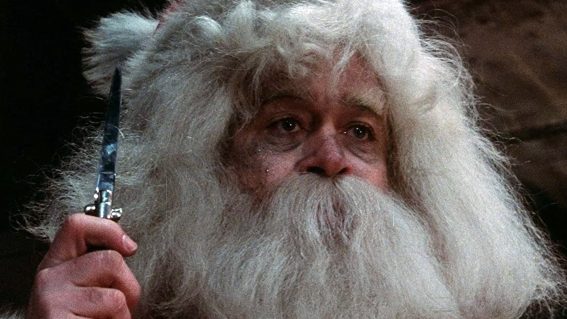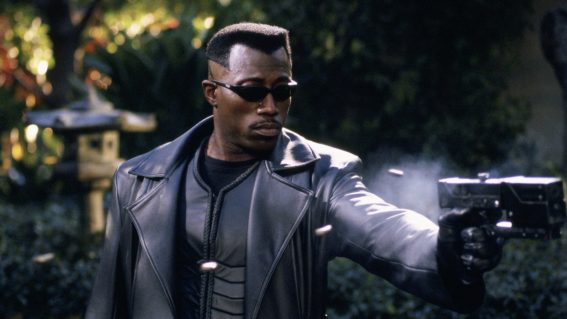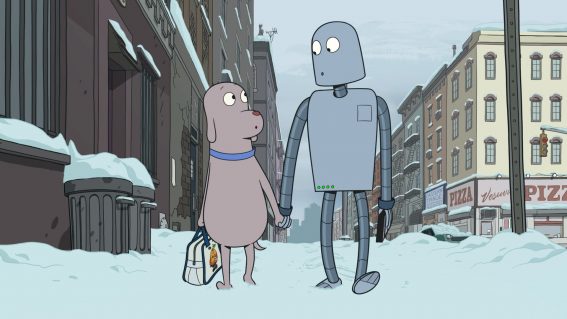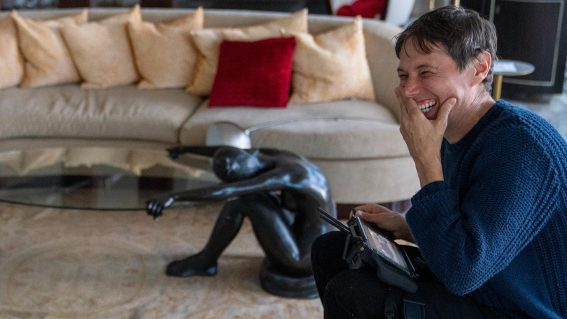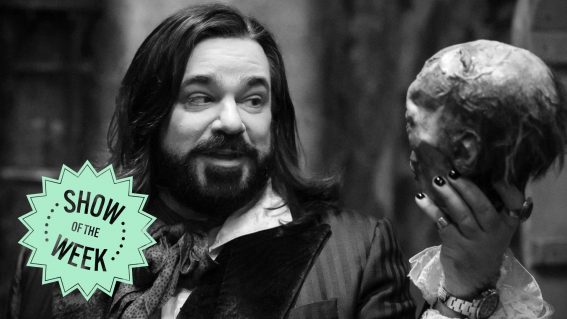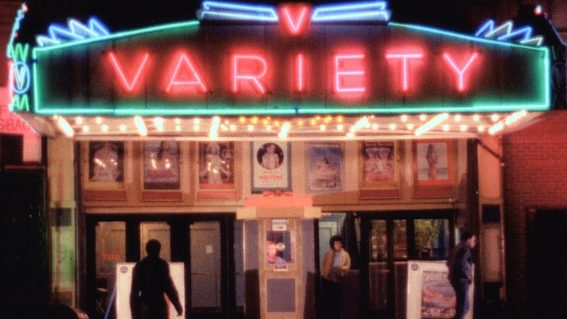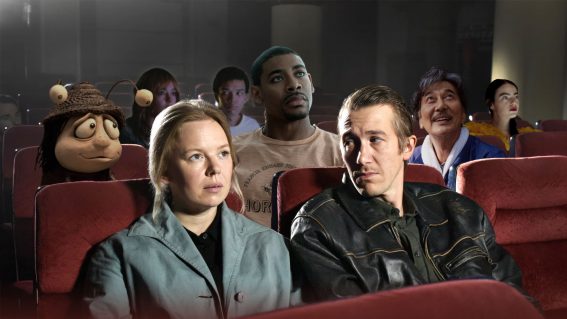H is for Howling III: The Marsupials: a pastiche of Australian identity. With werewolves.
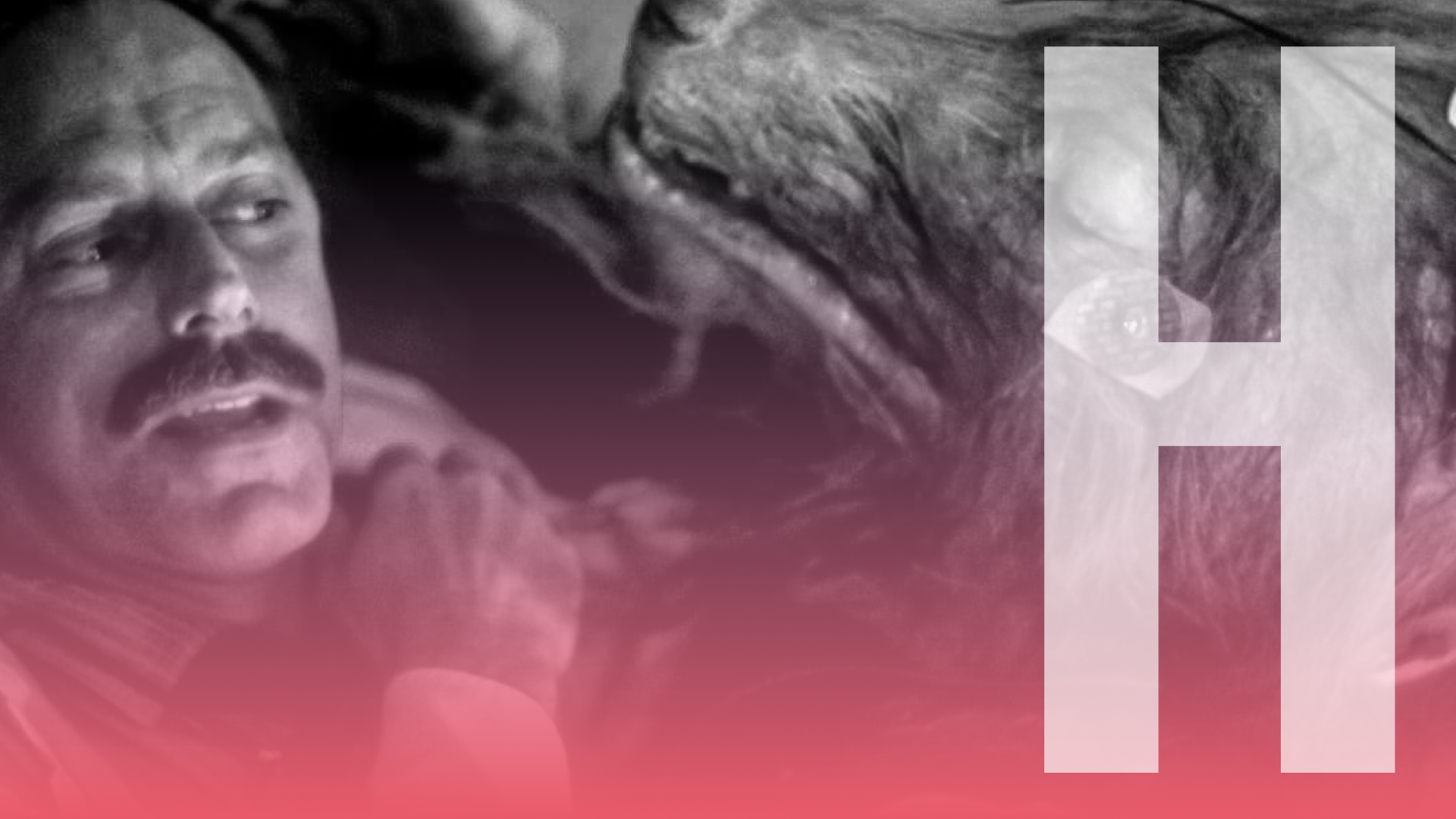
In monthly column The A-to-Z of Trash, bad movie lover Eliza Janssen takes us on an alphabetically-ordered trip through the best bits of the worst films ever. This month, unhinged horror sequel Howling III: The Marsupials takes a werewolf franchise down under and emerges as a fascinating portrait of Australiana.
I was torn between two horror films for the “H” edition of the column: 1982’s Halloween III: Season of the Witch, and 1987’s Howling III: The Marsupials. They’re both the third film in their horror franchises; both have pretty dire Rotten Tomatoes scores, at 50% and 23% respectively; and both are massive, ludicrous departures from the fairly straightforward lore that made Halloween and The Howling so popular, each originating as a groundbreaking suburban slasher and a fairly decent Joe Dante werewolf movie.
Now I love Season of the Witch very much, but I’ve gotta be patriotic here, for once in my life. Howling III: The Marsupials is a genuinely fascinating piece of Australian camp, taking our nation’s greatest weaknesses and insecurities out under a full moon and transforming them into a hilarious Ozploitation excoriation, even ripping the genre’s seediest trappings to shreds in the process.
I’ll jump right ahead to the end of the film to convince you to watch it on Brollie or wherever you can right now; it ends at a futuristic Oscars ceremony (actually the “82nd Annual Academy of Laser Arts and Sciences Awards”). Dame Edna Everage is the host. She presents an award to our heroine, whose lyncanthropy is triggered by the flashing cameras; she snaps her statuette prize, clearly a plastic Oscar from a Hollywood Boulevard gift shop, and wolfs out on live TV.
Yeah, the film’s werewolves are triggered by strobing lights; not the moonlight we’re used to from the werewolf canon, including 1981’s The Howling. In fact, none of the characters, storylines, or basic rules of the first two Howling films are observed here. Our main character is Barry Otto’s Leslie Nielsen-esque scientist Harry Beckmeyer, who stares directly down the barrel of the camera to present us—and his university students—with a silent 1905 film of Indigenous hunters smiling around a werewolf’s spear-pierced carcass. The kids watch in silence. Otto concludes the lesson with: “that will be all for today. There’s no class tomorrow. I have to go to Washington.”
He meets with the goddamn US President and they continue to speak straight to camera (“why are we being filmed?”, Otto asks: Prez says it’s for “future generations”). They shoot the shit about Beckmeyer’s belief that werewolves are proliferating in Australia and Russia. Next shot is the Sydney Harbour Bridge and Opera House. Beckmeyer meets his mate Professor Sharp (Ralph Cotterill), saying “well, it’s great to be home.”
This pace is absolutely hysterical. To use a very Australian expression, Howling III: The Marsupials is certainly not here to fuck spiders. Horny wolf-women, however…
At the same time as Beckmeyer’s search for proof of werewolf life down under, a young werewolf lady named Jerboa (Imogen Annesley) escapes her backwater bush cult of predatory werewolf folk and heads to Sydney. “I ran away from home”, Jerboa explains to a priest on the bus there. When he asks “WHY, CHILD?” in the most bizarre line-reading imaginable, she deadpans: “because my stepfather tried to rape me and he’s a werewolf.” The priest makes a bemused Jerry Lewis face.
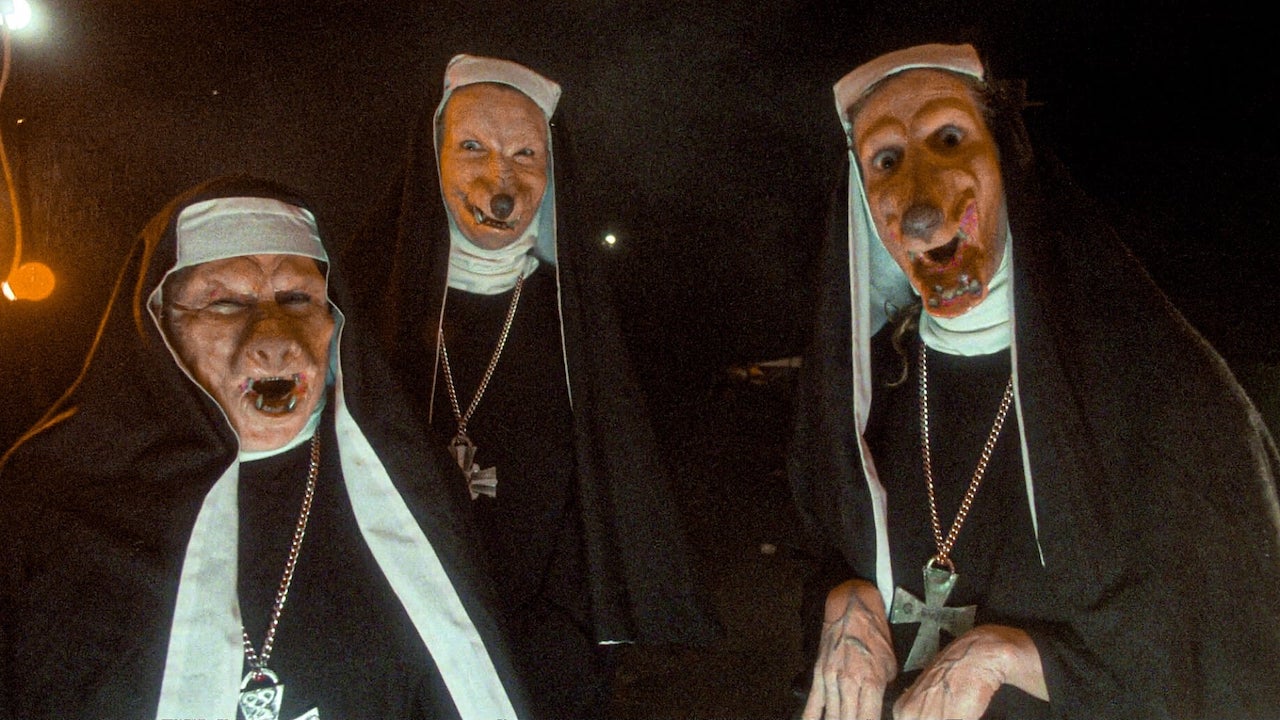
I’m trying my best here to convey the sheer randomness of how these moments are cut together. Director Philippe Mora is the eldest son of legendary French-Australian painter Mirka Mora, and his other films include Mad Dog Morgan, Pterodactyl Woman from Beverly Hills, Communion (starring Christopher Walken as the best possible person for aliens to abduct), and comparatively chill franchise entry The Howling II: Your Sister is a Werewolf. Five years before tackling this threequel, he also directed The Beast Within, another monster movie with dark sexual subtext. In that film, a woman gives birth to a child conceived through rape, who grows up to be a supernaturally-cursed cannibal freak. The poster for The Beast Within appears during a love scene between Jerboa and her human, American BF, and I think it’s hugely key to understanding the point of Howling III‘s off-the-wall purpose.
When the yank streetcasts Jerboa to appear in a schlocky horror film entitled Shapeshifters: Part 8, the shoot’s pompous director delivers a spiel to her that reconfigures the entirety of the larger film. “You know this movie is about pop culture”, he tells her: “In the 60s Andy Warhol showed us how pop could be high art…everything is high art. For example, in your first scene you’ll be gangraped by four monsters.”
Amongst gonzo scenes of charred werewolf corpses coming alive, and incessant talk about the Sony Walkman, there are these blackhearted, cynical jabs at Hollywood exploitation and the industry’s flimsy excuses for onscreen sex and violence. Later, Jerboa screams again and again, a shot of her neck being strangled by an unconvincing werewolf actor interrupted by this director hollering “ACTION!” and “CUT!”, the movements unchanging between takes.
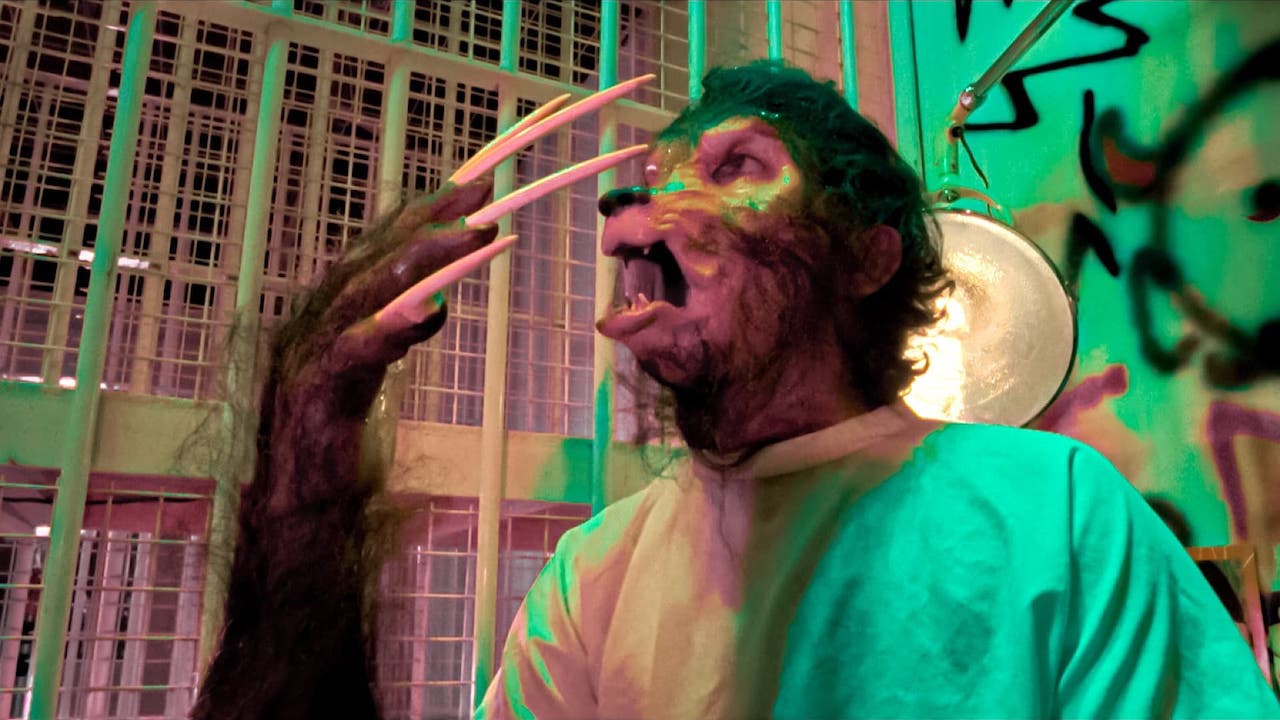
This movie is merciless in the tourist-shop, sensationalist, globalist parody of Australia it lampoons. First Nations activist Burnum Burnum first appears in the film by springing into frame and yelling, “G’day! Wanna throw a shrimp on the barbie?” He later transforms into a mystical Tasmanian Tiger creature, but in this film they’re referred to as “Tasmanian Wolves”. The town Jerboa hails from is called “Flow”, which, if you spell it backwards, is…whatever.
What I’m trying to say is that this is one of the most Australian movies ever made, in its violence, its laziness, its self-conscious jankiness, in the plot’s deference to the authority of other nations, empires and cultures. The ultimate happy ending for our hunted Australian lead is to wind up at Hollywood’s night of nights—and the coda to that happy ending is for her Aussie heritage to ruin it all, exposing her nasty natural hungers in front of an international audience. (Maybe it’s a good thing Margot Robbie wasn’t nominated this year after all.)
Characters are constantly seeking approval from the US, the UK, even the Vatican, despite the hairy lyncanthropic truth lying in the heart of their own bushlands. As a country we’re self-deprecating to a fault, and the places this horror-comedy goes suggest that director Mora’s ego is being either flayed or inflated with each scene. It’s hard to tell whether he’s secretly bitter about his part in blood-soaked titty movies, or excusing himself of it, ribbing us all to laugh and groan along.
It’s a sick ordeal, dwelling for an eternity on one of the most simultaneously revolting, wrongfully erotic, and weirdly sweet moments I’ve ever witnessed: Jerboa giving birth to an embryonic werewolf baby, and coaxing it into her marsupial pouch. Because there are so many unique “natural freaks” in Australia, after all; monotremes, marsupials, Barnaby Joyce, killer snakes and spiders. Why couldn’t we also host marginalised communities of predatory kangaroo-people? Our land abounds in nature’s gifts, of beauty rich and rare, right?
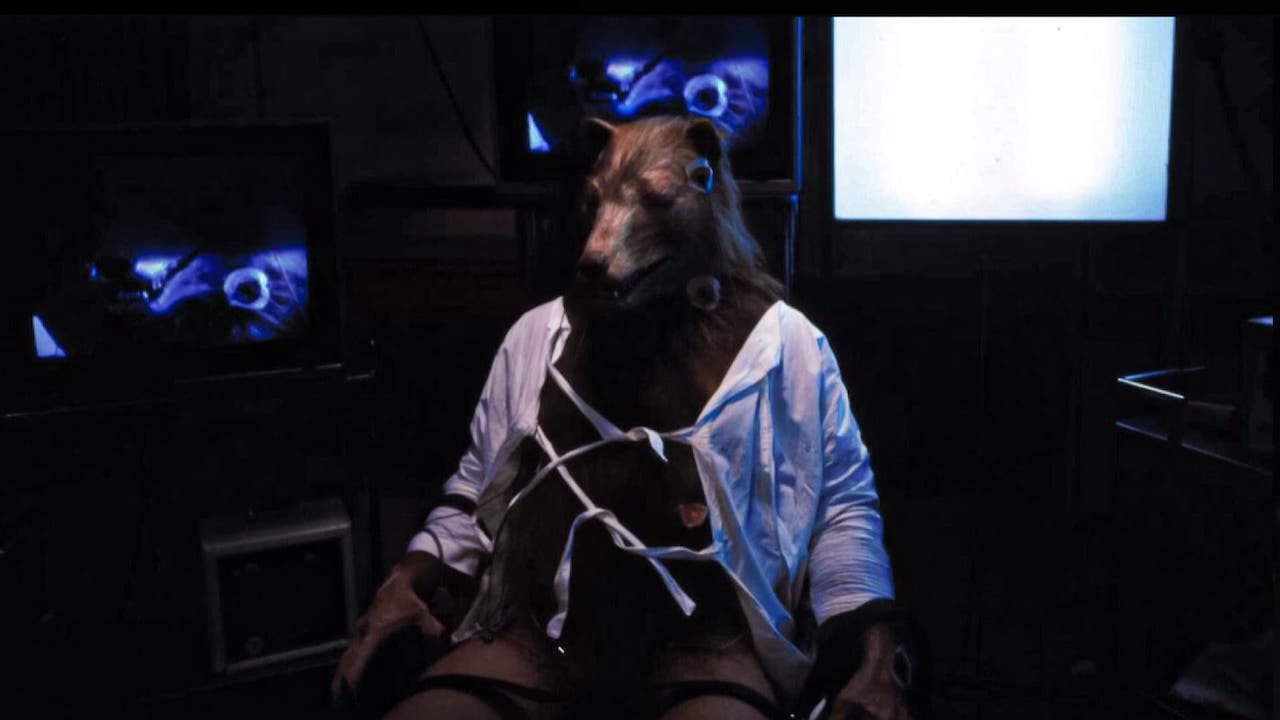
There are big laughs, nods to the country’s bleak colonial and genocidal past, somber explanations of the Tasmanian Tiger’s extinction, and a Russian werewolf ballerina transforming on stage, hair and snout growing as she pirouettes. Otto’s scientist falls in love with her and the movie’s government conspiracy, werewolf-hunting plot comes to an abrupt halt: the final scenes take place over the span of the next 20 years. While Otto and the dancer have been raising a werewolf baby in provincial outback bliss, the Vatican has apparently granted amnesty to werewolves, declaring that they’re part of God’s precious kingdom, too. I say “apparently” because this happens offscreen and we are only informed of it by Professor Sharp in a clunky line of dialogue.
You’ll just have to watch it yourself—perhaps a good Invasion Day pick?—but I can depend on Sharp to summarise the whole silly, savage ordeal: “there are more things in heaven and earth, Horatio, than you can shake a boomerang at.”





